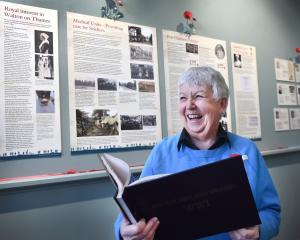
Museum assistant curator natural science Kane Fleury said continuing restoration efforts for the six ancient footprints had reached a "wonderful" moment as they moved temporarily out of public viewing.
The exact age of the footprints is unknown, but they could be from several million years ago.
Mr Fleury was part of the team, which also included Prof Ewan Fordyce, Marcus Richards and Dr Stephen Read, from the University of Otago geology department, which excavated the footprints from the Kyeburn River on May 10, 2019, with support also from Kati Huirapa Runaka ki Puketeraki.
The prints and the rocks in which they were preserved had finished their drying and were in a stable condition to begin the next phase of their preservation, Mr Fleury said yesterday. The next phase was a "jacketing process", perhaps using carbon-fibre material.
The footprint slabs would be partly wrapped in this protective material by the museum’s conservation team, to ensure the footprints could be easily moved and well protected, he said.
It was hoped to put the footprints on display again about February next year, among the moa displays, in the Southern Lands, Southern Peoples gallery once the jacketing process was complete, he said.
The museum’s temporary display of the footprints opened in November 2019, after they were found in the Kyeburn early that year by Ranfurly man Michael Johnston.
Mr Fleury was delighted with how the project had gone, given there had been no certainties from the start.
"It was a huge relief that we were able to lift the prints from the creek and that they have dried with no complications.
"It is incredibly rare for the public to get a blow-by-blow update of a fossil excavation and research project and I have enjoyed that we have been able to bring everyone along for the ride," he said.










!["[The sector is] less competitive than groceries and banks that the government spend a lot of...](https://www.odt.co.nz/sites/default/files/styles/odt_landscape_small_related_stories/public/story/2025/04/billie_moore.jpg?itok=GN8uIA4p)
